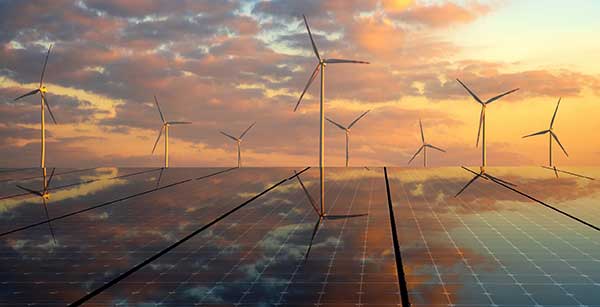The renewable energy revolution is gathering pace in the United States after record-breaking additions of green energy to its electricity generation capacity.
According to figures released by the U.S. Energy Information Administration (EIA), wind power has led the way, with a record 14.2GW of capacity added in 2020, bringing its total output potential to 118GW. In 2020, that meant 8.4% of national electricity generation came from wind turbines, with that anticipated to rise to 10% this year.
Much of the addition was thanks to the U.S. production tax credit phaseout. The credit, known as PTC, is a per-kilowatt-hour (kWh) credit for electricity generated by eligible renewable sources. Congress recently extended PTC at 60% (18 cents per kWh, or $18 per megawatt-hour) to encourage further renewables investment. Wind projects must start construction, operation, or spend at least 5% of the total capital costs before December 31, 2021, to qualify for PTC.
Several states are leading this wind power revolution. Texas boasts 20% of its electricity production from wind turbines; the Lone Star state had 30.2 GW capacity as of December 2020. Some 58% of Iowa’s electricity comes from wind, with Kansas following at 43%.
More than half of 2021’s wind capacity additions (12.2GW) in the U.S. will be in Texas and Oklahoma. The largest project coming online this year being the 999-megawatt (MW) Traverse wind farm in Oklahoma.
Solar Power Coming To the Fore
Solar will push ahead of wind this year with an anticipated record-breaking 15.4GW extra generation capacity. Solar will account for some 39% of all new production capacity this year compared to 31% for wind, beating the 12GW of solar added last year.
Texas is again at the forefront of this renewable surge, responsible for 28% of new utility-scale solar photovoltaic (PV) capacity. Nevada and California (9% each) and North Carolina (7%) are the other big solar movers.
In total, renewables will provide 81% of all electricity generation capacity additions this year. In comparison, natural gas will put 6.6GW (16%) more into the new electricity power mix.
The Future Is Renewable Energy
The United States’ electricity market is slowly shifting towards renewables. It will soon reach almost a quarter of the country’s total electricity production.
Natural gas will drop from 39% of overall electricity creation in 2020 to 35% in 2022. Over the same timeframe, renewables’ share will increase from 20% to 23%, and nuclear drops from 21% to 19%. Bucking the trend is coal, anticipated to rise from 20% market share to 23%.
Battery Power’s Rise in the Energy Mix
One of renewable energy’s biggest issues is how to store power during periods of excess production — this has created a boom in battery storage capacity.
Batteries store energy and release it into the grid when renewables are not producing energy — for example, at night for solar panels or on days when there isn’t much breeze for wind turbines. This year will see 4.3GW of battery power additions, about 11% of all new renewable energy production capacity. The world’s largest solar-powered battery (409 MW) at Manatee Solar Energy Center in Florida should be operational by the end of 2021.
Not Quite Net-Zero Emissions … Yet
The EIA estimated that the country’s CO2 emissions dropped 11% in 2020 due to weaker demand caused by the COVID-19 crisis.
It predicts 2021’s emissions will be 6% greater than in 2020 and a further 2% higher in 2022 as the economy recovers. Electricity production in the United States brings more renewables online each year, making the longer-term goal of net-zero emissions by 2050 inch closer to reality.
Opinion writer: Tom Shearman
The opinions, beliefs, and viewpoints expressed by the various authors do not necessarily reflect the opinions, beliefs, or viewpoints of Interactive Energy Group, LLC (IEG) or its parent companies or affiliates and may have been created by a third party contracted by IEG. Any content provided by the bloggers or authors are of their opinion and are not intended to malign any individual, organization, company, group, or anyone or anything.
Brought to you by energysavings.com
All images licensed from Adobe Stock.

